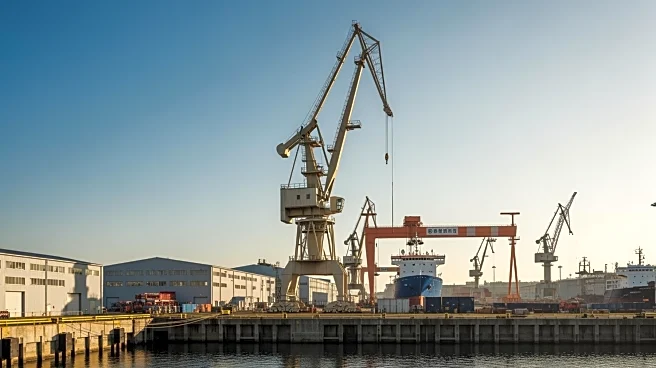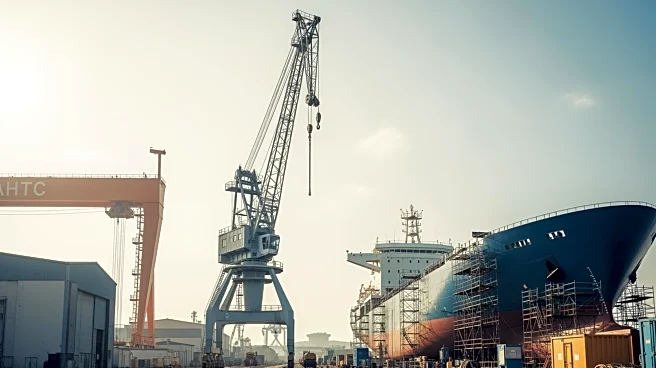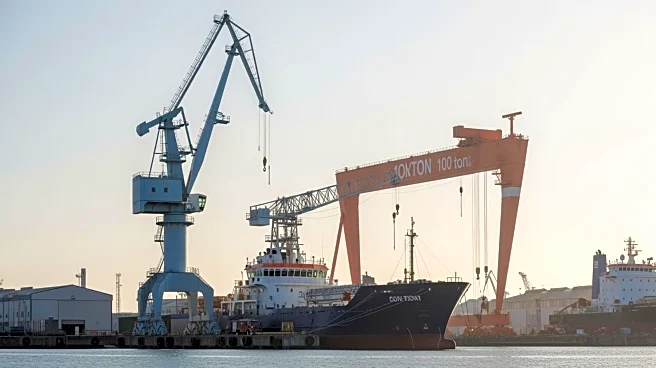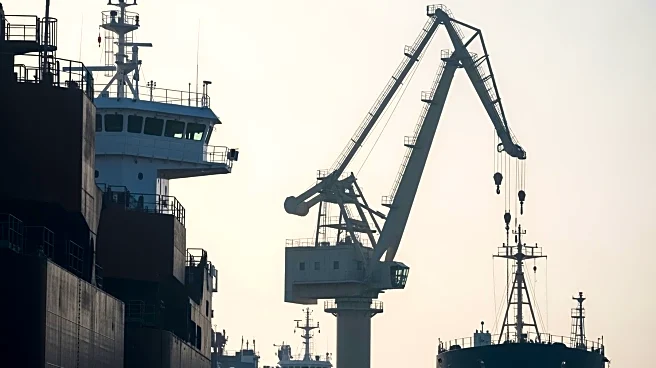What's Happening?
St. Johns Ship Building, a subsidiary of Americraft Marine Group, has commissioned a new 100-ton Link-Belt rough terrain crane, funded by the U.S. Department of Transportation’s Maritime Administration
(MARAD) Small Shipyard Grant Program. This acquisition is part of the shipyard's modernization efforts, enhancing its material-handling and modular assembly capabilities. The crane, fabricated in Lexington, Kentucky, features advanced technology including a full-power boom and real-time telematics, which will support the shipyard's backlog of commercial and government vessel programs. Joe Rella, President of St. Johns Ship Building, emphasized the importance of MARAD's support in improving productivity and workforce efficiency, thereby strengthening America's maritime industrial base.
Why It's Important?
The acquisition of the crane through MARAD's grant program is significant for the U.S. shipbuilding industry, particularly for small and mid-sized shipyards. It represents a strategic investment in modernizing facilities, which is crucial for maintaining competitiveness in the global market. By enhancing productivity and efficiency, the grant helps secure jobs and supports the delivery of complex vessels, benefiting both commercial and government sectors. This initiative aligns with broader efforts to bolster the U.S. maritime industrial base, ensuring that shipbuilding remains a viable and thriving industry within the country.
What's Next?
St. Johns Ship Building plans to continue investing in equipment, facility upgrades, and workforce training as part of its multi-year infrastructure improvement plan. These efforts are expected to further enhance the shipyard's capabilities and competitiveness. The ongoing support from MARAD will likely encourage other small shipyards to pursue similar modernization initiatives, potentially leading to increased grant applications and further development within the industry.
Beyond the Headlines
The MARAD Small Shipyard Grant Program not only supports economic growth but also plays a role in preserving the cultural heritage of American shipbuilding. By investing in modern technology and infrastructure, the program helps ensure that traditional skills and craftsmanship are complemented by cutting-edge capabilities, fostering a sustainable future for the industry.












